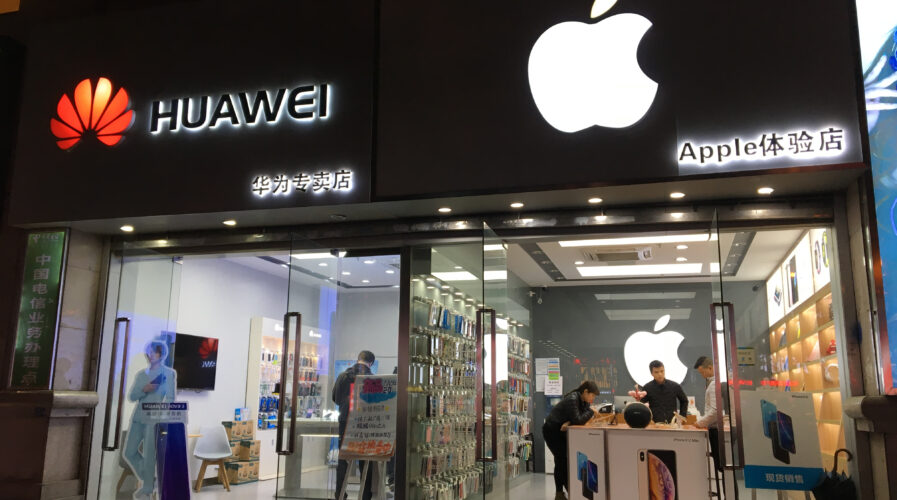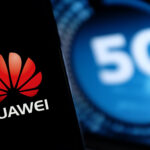
(Source – Shutterstock)
Its iPhone vs Huawei in launching phones that supports satellite connectivity
- Huawei beat Apple in the satellite communication game by announcing its Mate 50 series, a day ahead of Apple’s product launch event.
- The new Mate 50 and Mate 50 Pro come with the ability to send texts via satellite communication by global BeiDou satellite network, an alternative to the US government-owned Global Positioning System.
- So far Apple’s SOS satellite option is only available in the US and Canada, while Huawei’s only works in mainland China.
Sending messages via satellite signal isn’t a new technology — it has been around for decades. But being able to do that via a smartphone for everyday use, now that is something new. The nascent space — which many thought was first explored by Apple with its latest iPhone 14 series — was actually commercialized first by Chinese telecoms giant Huawei Technologies Co through its Mate 50 series.
Both Huawei and Apple launched their latest series of smartphones, iPhone 14 and Mate 50, this week, but the former beat the latter to it by just a day. Huawei’s Mate 50 series, announced on Tuesday, delivers the first smartphones able to link with China’s BeiDou global satellite navigation system, according to Huawei’s consumer business group CEO Richard Yu Chengdong at the product launch.
For Apple on the other hand, the satellite connectivity feature was one of the big new additions to the iPhone franchise, unveiled on Wednesday along with the iPhone 14. It is meant to solve long standing problems with dead zones in remote areas. Emergency SOS via satellite will be available with an iOS 16 software update coming in November 2022, but only limited to the US and Canada at this point, in collaboration with the US government-owned Global Positioning System.
In a blog posting by Apple, the company said in ideal conditions with a direct view of the sky and the horizon, a message might take 15 seconds to send, and over a minute to send under trees with light or medium foliage. “If you’re under heavy foliage or surrounded by other obstructions, you might not be able to connect to a satellite. Connection times can also be impacted by your surroundings, the length of your message, and the status and availability of the satellite network,” it added.
Unlike iPhone 14, for Huawei unfortunately, its Mate 50 series lacks 5G mobile connection owing to US sanctions that restrict the company’s access to advanced semiconductors. Even for the Chinese telecom giant, its Mate 50 series would be the first smartphones able to link with China’s BeiDou global satellite navigation system, and will only be limited to China.
Frankly, the stakes are high for Huawei, formerly China’s biggest smartphone vendor, to remain relevant in the world’s biggest mobile phone market amid stiff competition from major Chinese Android handset makers and Apple, which has dominated the mainland’s high-end smartphone segment.
Apple had a 70.5% share of the domestic market’s high-end segment of smartphones priced from US$600 in the first six months of this year, according to data from tech research firm IDC. By comparison, Huawei had only a mere share of around 9% in the same period. Perhaps the Mate 50-series smartphones’ support for satellite communications would augur well for Huawei, but being also the world’s largest telecommunications equipment maker, the company remains under pressure since it has been under the US government’s trade blacklist in 2019.
For iPhone 14 users, the emergency SOS service is free for two years. Huawei, having made the satellite communication SMS feature free for the Mate 50 series, limits its users to only 30 satellite-oriented SMS free per month. Overall, satellite market specialist Northern Sky Research (NSR) has described the direct satellite-to-device market as the single biggest opportunity in satellite comms history, forecasting it will generate US$60 billion in revenue over the next decade and support 350 million subs by 2030.
READ MORE
- Strategies for Democratizing GenAI
- The criticality of endpoint management in cybersecurity and operations
- Ethical AI: The renewed importance of safeguarding data and customer privacy in Generative AI applications
- How Japan balances AI-driven opportunities with cybersecurity needs
- Deploying SASE: Benchmarking your approach


